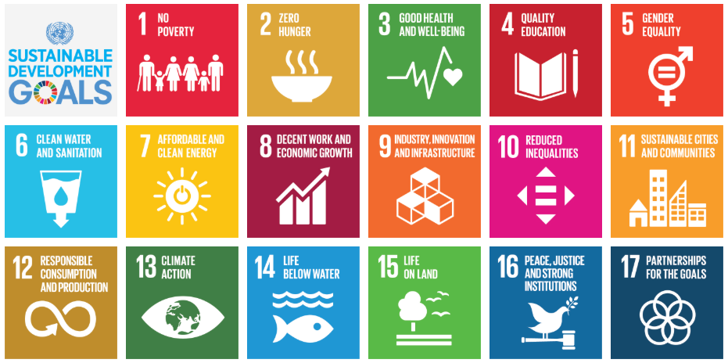

In 2018, Canterbury formed an internal environmental, social, and governance (ESG) committee to synthesize and streamline the ever-growing ESG investment universe. The committee has since created a framework and toolkit to assist clients in finding customized ESG solutions that align with their mission, values, or investment process. Canterbury defines ESG as three separate categories: exclusionary screening, best-in-class selection, and positive impact.
In the third part of our three-part series on ESG, we will focus on impact investing and how it can be implemented across client portfolios.
Impact investing is an approach that seeks specific outcomes for ESG-related issues. The segment focuses on intentionality of investments and seeks to measure the impact of desired outcomes. Impact initiatives are typically targeted and tend to directly relate to investors’ missions and community-oriented goals. Investments can be localized and specific to an investor’s community or can be global and dedicated toward broad mandates. According to the 2019 report “Impact Investing: Mapping Families’ Interests and Activities” by The ImPact, a global membership community of families committed to impact investing, examples of potential initiatives include:
Investors can also refer to Sustainable Development Goals (SDGs) set forth by the United Nations-supported Principles for Responsible Investment (UN PRI) to find themes that coincide with their organization’s objectives. We will discuss the SDGs in more detail later in the article.
Targeted investments have a wide range of return expectations that can be below or above traditional market rates of return. Rates of return are dependent on multiple factors, which includes asset class, industry/sector, liquidity profile, and the level of investment saturation of the particular opportunity. For instance, a loan given to a real estate developer to build affordable housing has a very different return and risk profile compared to an equity investment in a solar infrastructure start-up.

Exhibit A
The Heron Foundation first introduced the continuum, as shown above, between below-market investments and market-rate investments. It illustrates the continuum in which investments can be classified, based on the intended return expectation of the investment and the type of investment. Investments meant to prioritize investment return potential fall within the market-rate investments category, with an increasing risk profile toward private equity but also a higher return potential. At other end of the continuum are the investments where investors are willing to take incrementally less-than-market return in order to achieve more impact. There is greater risk of less return further away from the center of the continuum, but incrementally greater potential for impact.
Return expectations also vary depending on the primary objective of the investor. Institutions and families may be willing to accept below market rates of return if the cause and impact of the investment exceeds the financial benefit. For instance, institutions have undertaken program-related investments (PRIs) and mission-related investments (MRIs) to further align philanthropic assets with respective mission statements.
Definitions for PRIs and MRIs are as follows, as described by The ImPact’s 2016 “Impact Investing: A Primer for Family Foundations.”
While PRIs may offer a below-market rate of return, the potential to recycle capital dedicated to grants can lead to a higher philanthropic impact for an organization. For example, a private foundation dedicated to reducing poverty could finance a low-income housing development project at an interest rate that is below the prevailing market rate. The originated loan would be considered a PRI since it directly relates to the private foundation’s mission. As such, grant-related dollars would be allocated to the investment and the private foundation’s required spend rate (typically 5%) would decrease by the size of the loan. As the loan is paid back, dollars can be recycled into another PRI opportunity and the organization can further its giving goals.
MRIs are typically investments that provide a societal impact along with an attractive risk-adjusted return. Since there are no official regulations or constraints, an institution or family can designate a particular opportunity as a mission-related or mission-driven investment. MRIs must be used from the asset base of the organization’s portfolio. Ultimately, both PRIs and MRIs can be used to further enhance an organization’s philanthropic goals.
Impact investing can also be addressed through broad-based themes, such as those developed by the UN PRI. The SDGs aim to address global problematic sustainability issues. The 17 SDGs and 169 underlying sub-targets were adopted in 2015 in partnership with countries around the world.

Exhibit B. Source: Sustainable Development Goals Knowledge Platform
Organizations can use the SDGs as a reference to align their mission with actionable investment themes.
Investments in these themes span various asset classes as well as investment vehicles. From a measurement perspective, money managers and asset owners continue to refine how impact in these areas can be accurately assessed.
While endowments, foundations, and families each seek to pursue their own missions and goals, many groups find considerable overlap and common ground among each other. As a result, organizations collaborate with each other by investing in the same impact initiative or by sharing potential PRI or MRI opportunities. State-specific collaboratives have also gained traction in recent years whereby endowments, foundations, and public plans come together to invest in community-specific impact initiatives. The combined efforts lead to increased synergies and higher probabilities of success.
Canterbury plans to become more involved in the impact investing space by connecting institutions and families to initiatives that align with their underlying missions and values. Our firm also aims to facilitate and promote potential collaborations among organizations to ultimately lead to better impact outcomes.